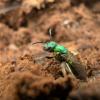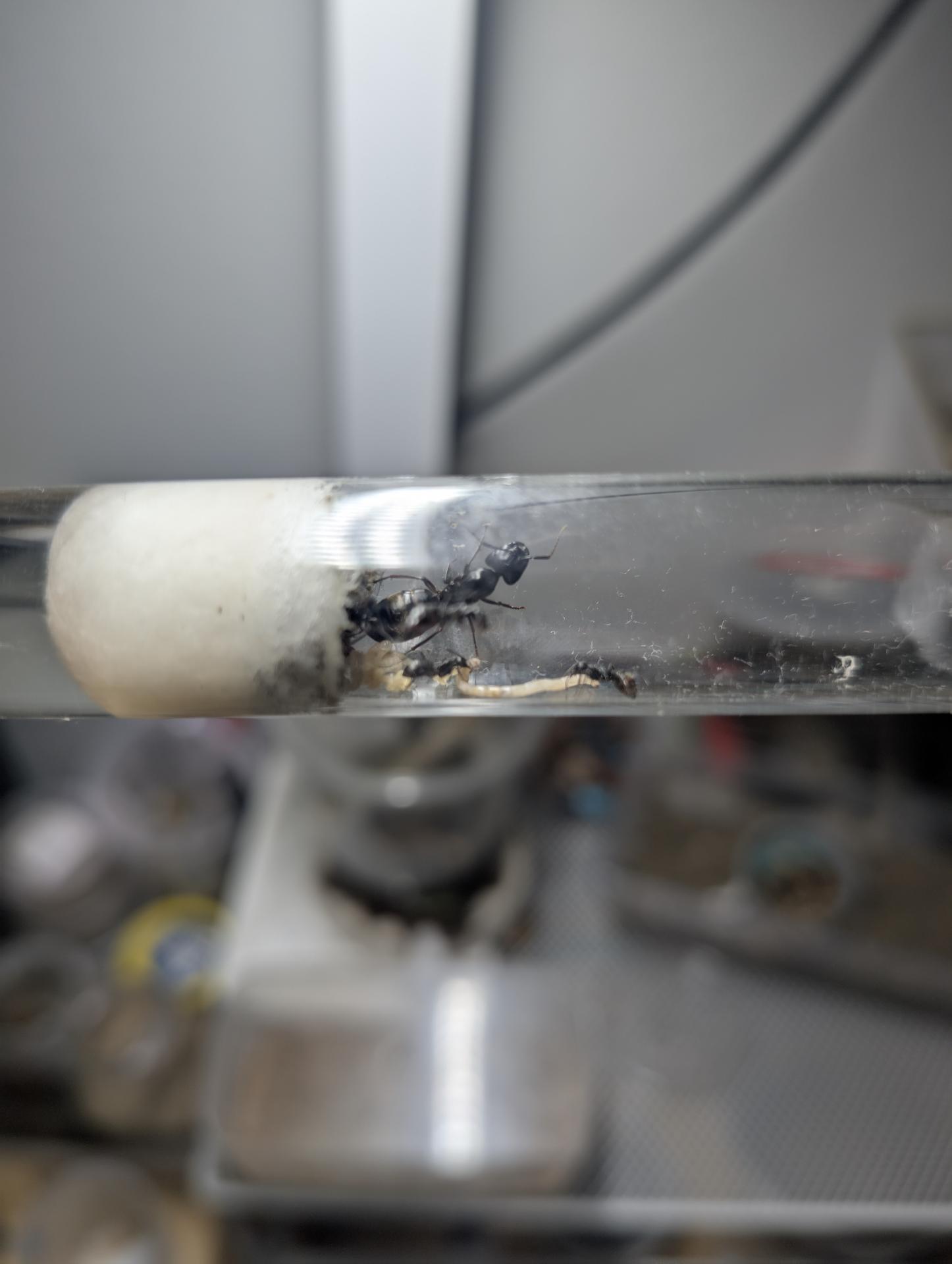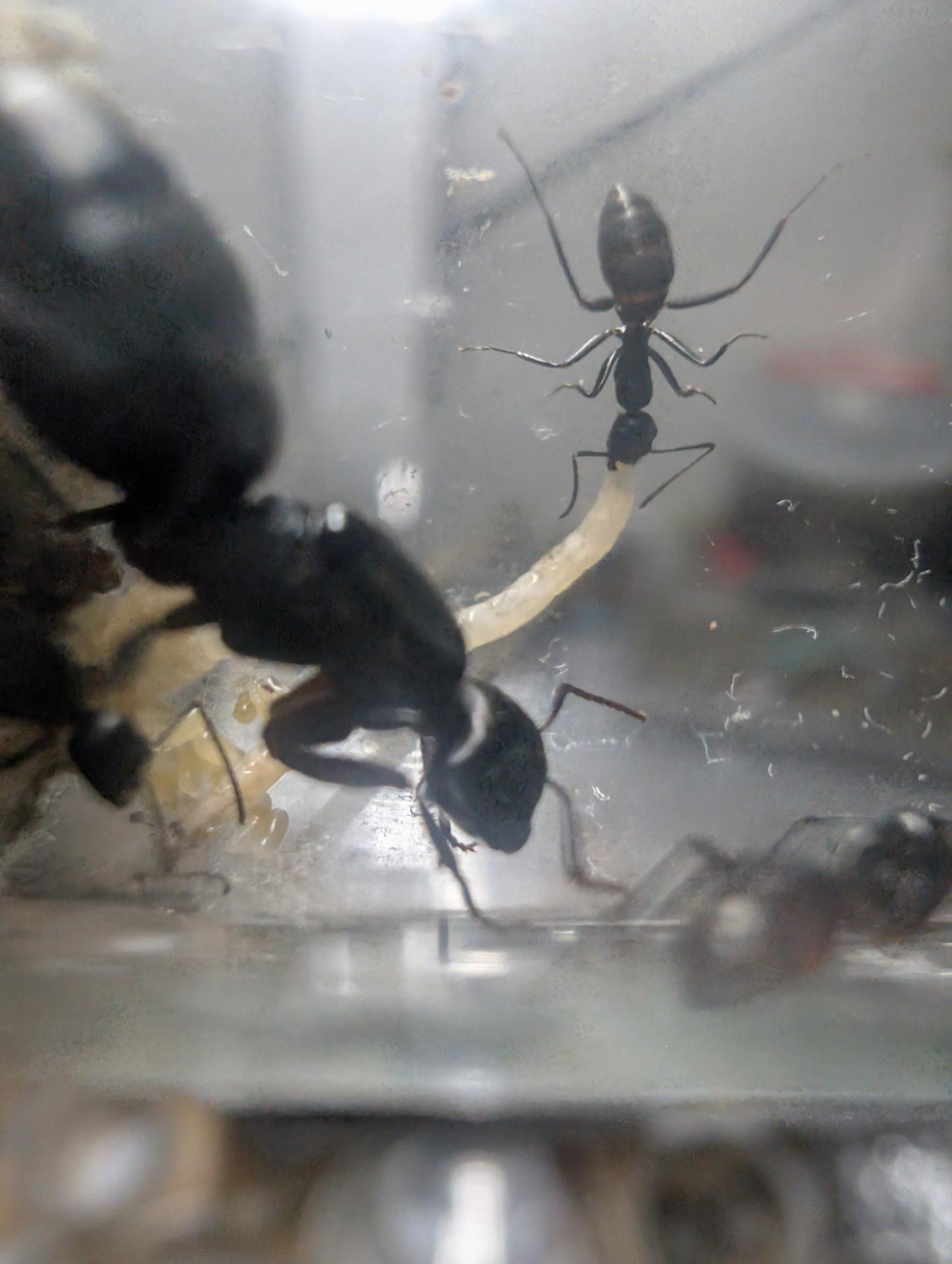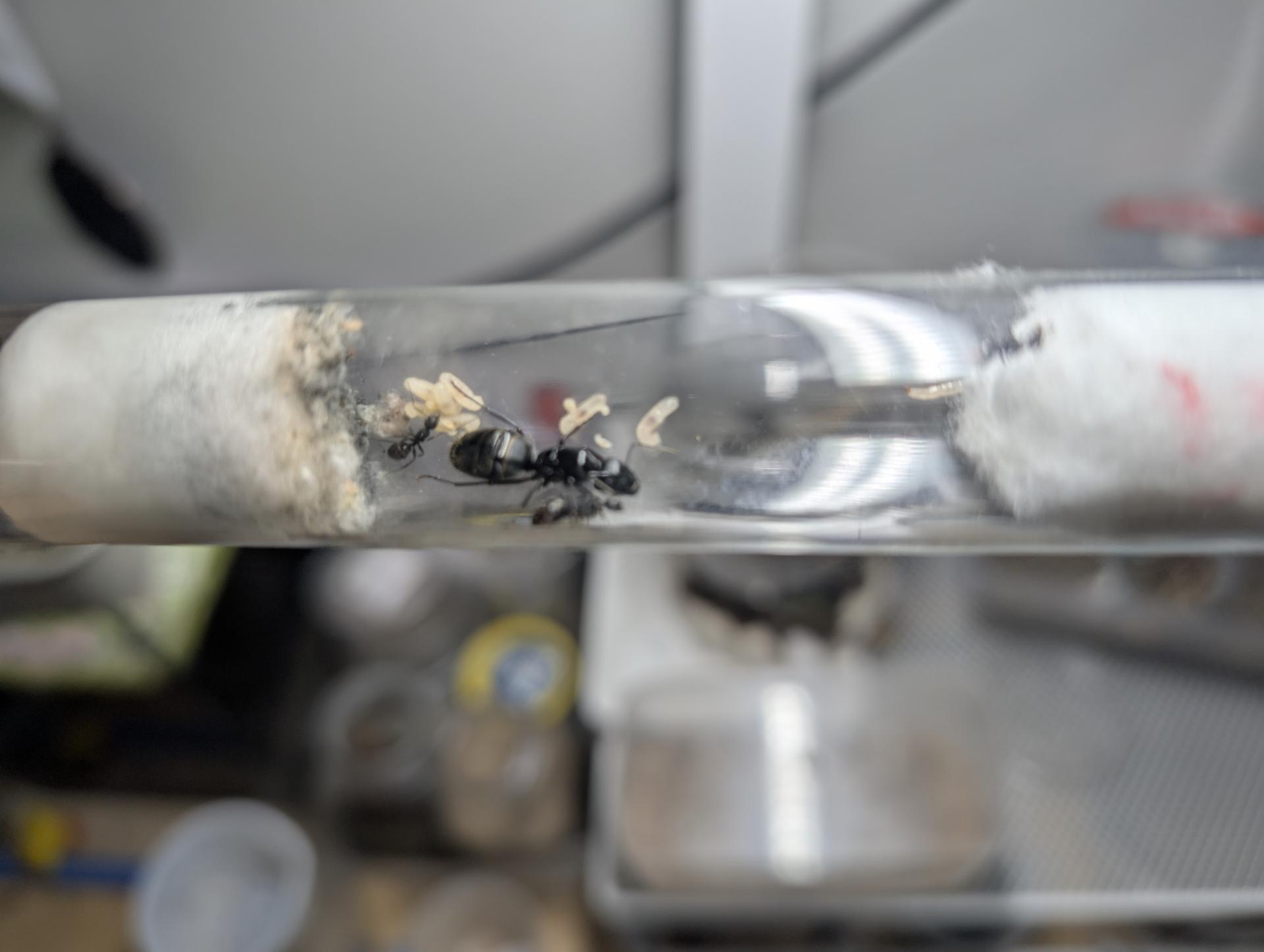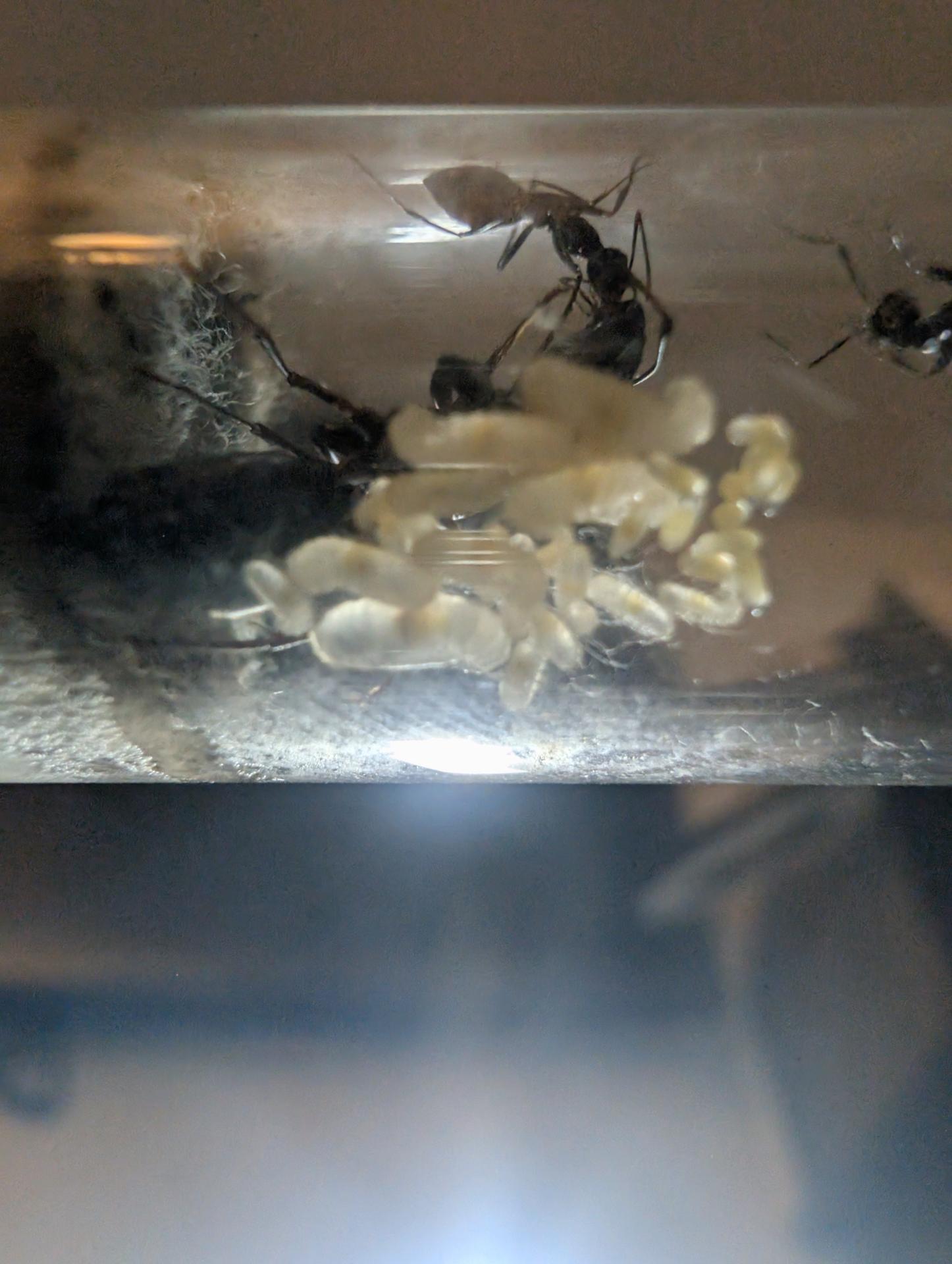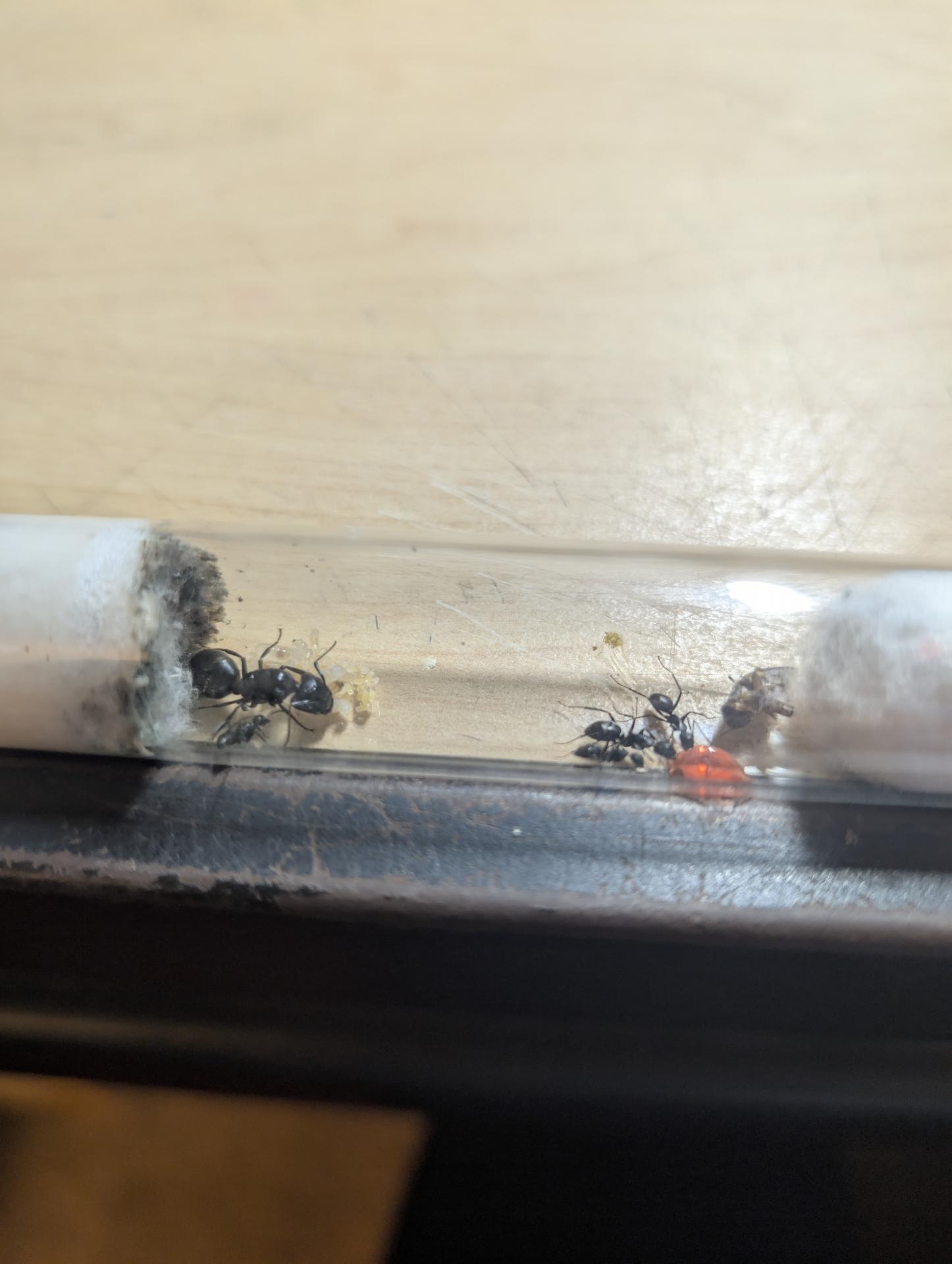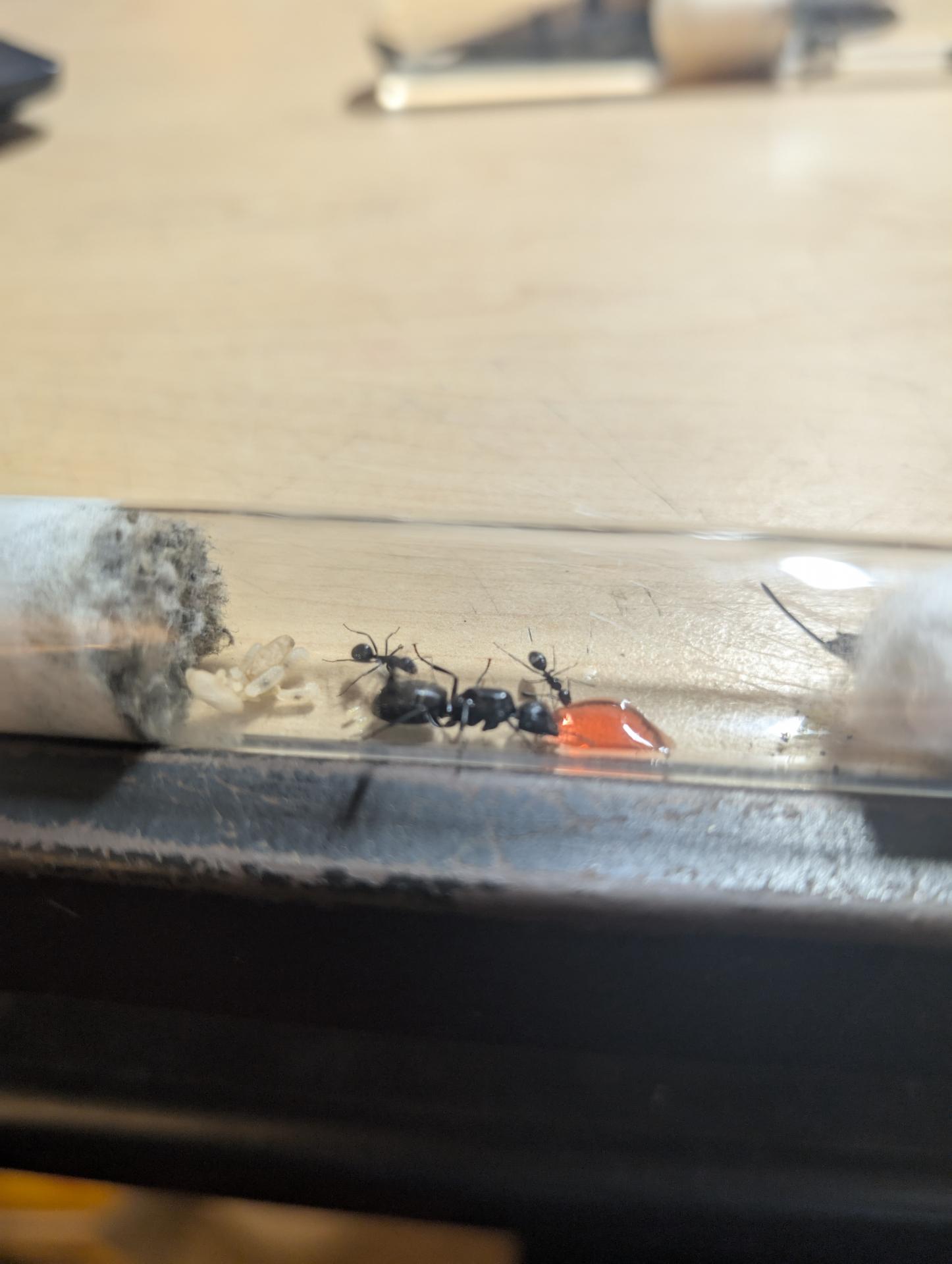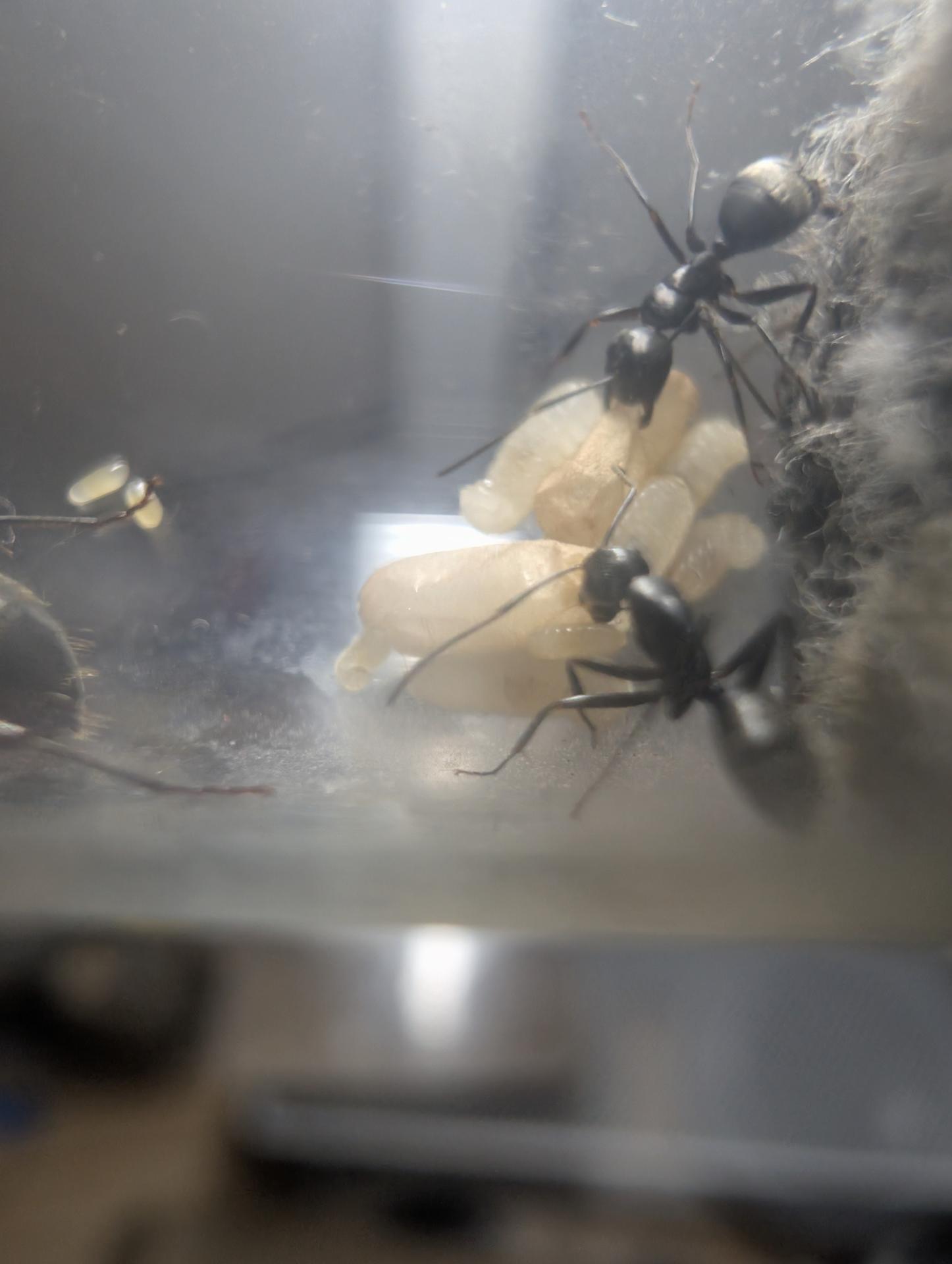This journal will be on my camponotus ants, I will update about them whenever something interesting happens or they grow a lot.
Currently, I have 3 species of carpenter ants. They are Camponotus pennsylvanicus, novaeboracenisis and nearcticus.
Camponotus pennsylvanicus are easily he most abundant carpenter ants I can find in my area, nearcticus and novaeboracensis are very rare and I have caught my colonies by biking to other parks and breaking open logs.
Most of my pennsylvanicus colonies along with the novaeboracenisis are seemingly in hibernation. The workers are extremely fat to the point where they have to drag themselves around, however the largest colony of pennsylvanicus's queen seems to be skinny and I have been worried since she was missing a leg and antennae when I caught her.
Since most most of my carpenter ants are in hibernation I will update mostly on 2 of my found camponotus queens.
Camponotus pennsylvanicus Queen A:
She currently has 4 workers and a few larvae and freshly lad eggs.
Camponotus pennsylvanicus Queen B:
She currently has 3 workers some medium sized larvae.
Sorry for the blurry picture!
Both queens seem to have lower the average nanitics but I'm not worried because their brood is developing very fast. I'm guessing its because of the different climate since most camponotus queens I have found in the area seem to have around 4-5 nanitics.
Edited by L.H, August 17 2025 - 11:10 AM.

